European Ship Iconography
Richard Furuta, Filipe Castro, Austin Griffin, Kyle Spence, Emily Robertson
Link: Spanish Merchantmen Iconography @ academia.edu
Link: Portuguese Merchantmen Iconography @ academia.edu
Link: Caravels – Iconography @ academia.edu
Introduction
Ship images are not easy to interpret. Sometimes they are detailed but represent ships that are imagined and never existed, sometimes they are impressionistic but the features they represent are accurate and important, often they have been made by artists that don’t know much about ships, and either take liberties or make mistakes that can be difficult to find.
A paper by Harry Tzalas (1990) details the process of painting the Kyrenia II ship on a church in Cyprus. In spite of the fact that the artist had a camera and took pictures of the real ship, the differences – some liberties and some mistakes – between the ship and the representations explain eloquently the difficulties related to an accurate representation of reality by a non-expert artist.
Good images are difficult to find before the late 16th century. Most ship images seem to have been copied from other images. In fact, when painters came out of their ateliers and into the outer world, to paint what they saw, there was a scandal in the art world: the Salons des Refusés of 1863, 1864, and 1873 testifies to this (Boime 1969).
The late Jose Luis Casado Soto (2001) wrote a paper on the use of stock images throughout the centuries in Europe, and Kotaro Yamafune (2012) showed that the same could be said about 16th and 17th century Japan, at least in what pertains to the representation of Portuguese ships in Namban Screens.
Team
This project started any years ago as a collection of early modern ship representations gathered by Filipe Castro. In 2016 Austin Griffin developed a database under the guidance of Richard Furuta. In 2018 Vicente Benitez Cabrera and Olivia Thomas started working on this project, both in collecting ship types and linking them to regions and periods, and organizing the images’ metadata.
Methodology
This database focuses on European watercraft from 1300 to 1800. We intend to continue gathering images and tagging them with metadata such as author, date, country or region, vessel represented, etc.
A second component of this project is a collection of ship designations and types throughout regions and times, hopping to be able to relate them to at least some of the images collected.
References
Boime, Albert , 1969. “The Salon des Refusés and the Evolution of Modern Art” . Art Quarterly. 32.
Soto, J. L. Casado, 2001. “The Spanish Ships of the Oceanic Expansion. Documentation, archaeology and iconography from the 15th and 16th centuries.” in Alves, ed., Proceedings of the International Symposium ‘Archaeology of Medieval and Modern Ships of Iberian-Atlantic Tradition’. Lisbon: IPA, p. 131-161.
Tzalas, Harry E., 1990. “Kyrenia II in the Fresco of Pedoula Church, Cyprus. A Comparison with Ancient Ship Iconography,” in Tropis 2 Proceedings of the 2nd International Symposium on Ship Construction in Antiquity, H. Tzalas, ed. Athens, p. 323-327.
Yamafune, Kotaro, 2012. The Portuguese Century in Japan and the Namban Screens. MA Thesis, Texas A&M University. Learn More
